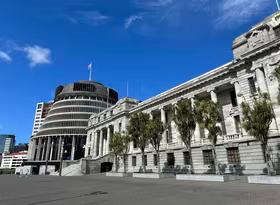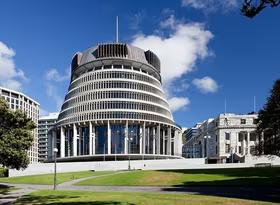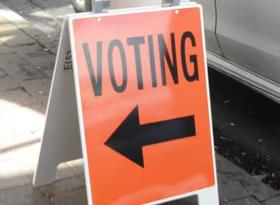Scheming the student loan scheme
I was recently completing my online tax return on the IRD’s website and happened to glance across at my student loan balance. Although this sizeable hangover from my student days is typically the least of my worries, seeing this large stock of debt next to my name did make me pause for a second. In light of the recent raising of mandatory student loan repayment rates and removal of voluntary repayment bonuses, it occurred to me that I should reassess whether my current repayment strategy is still optimal.
The issue of optimal student loan repayment strategies has been a pet project of mine ever since my student days. As a student of finance and economics, I quickly put theory into practise and set to work leveraging up my student lifestyle by working the margin between interest-free student loan money and higher real rates of return available on bank deposits, bonds, and shares. Although I was in the fortunate position of not needing much in the way of a student loan, I still borrowed as much as I could to exploit this free lunch.
Upon entering the workforce, my thoughts then turned to minimising the proportion of the real value of my outstanding student loan that I would return to the government. In a 2011 Dominion Post article, I concluded that to achieve this goal, under the then system of zero interest and 10% voluntary repayment bonuses, I should “…make the minimum required repayments for now, but in a number of years’ time repay the remaining balance of the loan in full with a single voluntary repayment. At any point in time, a voluntary repayment is only logical if the compounded return from investing the money is less than the 10% voluntary repayment bonus”.
Recent changes to the scheme
Following this type of minimum repayment strategy has worked well for me and many other student loan borrowers over recent years, but our common exploitation of the student loan scheme has cost the government (and ultimately other taxpayers) hundreds of millions of dollars per year. In light of this significant cost, at a time when the government is determined to get its books back in order, it is not surprising that policy initiatives have recently been introduced to try and limit the ability of borrowers to exploit the student loan system.
In April, the government raised the mandatory repayment rate for earnings over $19,084 per annum from 10% to 12%, and removed the 10% bonus for voluntary repayments over $500. The first of these policies was designed to speed up underlying repayment rates, while the latter was aimed at removing a loophole for exploiting the scheme. It seems that some borrowers had been exploiting the voluntary repayment bonuses to such an extent, that they were borrowing and repaying money within a tax year simply to be gifted a cut of the funds by way of the repayment bonus system.
But the new policies didn’t have much of an effect
However, even after these attempts by the government to improve the student loan repayment system, the scheme remains flawed. Raising the mandatory repayment rate has forced an increase in the underlying speed of repayments, but the complete removal of the voluntary repayment bonus has taken away the incentive to make voluntary lump-sum repayments towards the end of the loan holding period. After factoring in these changes to the scheme, the most rational strategy for a New Zealand-based student loan holder is to make only the minimum required repayments throughout the loan holding period and let inflation erode away the value of the remaining debt. This strategy is rational for the borrower because it minimises the proportion of the real value of the student loan that they end up repaying.
Just what is wrong with the student loan system?
The underlying problem with student loans is that they remain interest-free and, as a result, there is no incentive for borrowers to make additional repayments on top of what is required. In its current form, the student loan scheme is middle class welfare – effectively boiling down to a backhand subsidy to those in society with the highest earning potential. Rather than being a true means of funding an education, interest-free student loans remain a loophole for the tertiary educated to exploit.
You may say that this type of exploitation is selfish, and I agree with you – it is! But the problem is that the scheme is designed in such a way that individual incentives are simply not aligned with what is best for society. At a personal level, I exploit the scheme because I don’t want to see others making a buck that I can’t, but at a societal level, I realise that these selfish actions in aggregate are costly to other taxpayers. This type of stalemate is known to economists as a ”prisoners’ dilemma” and can only be solved by the introduction of a mechanism that aligns private interests with those of society.
How could private interests be aligned with those of society?
The first-best solution for aligning what’s best for the individual, with what’s best for society, would be the reintroduction of interest on student loans. Under this first-best policy, the decision to enter tertiary education would become more of an investment decision, where the reward of a higher future salary was balanced against the interest expense of additional debt.
If student loans were interest bearing then borrowers would be incentivised to borrow no more than was necessary and to repay the loan as quickly as reasonably possible. In this situation, the student loan scheme’s cost to the taxpayer would be minimised, because not only would the stock of student loan debt be smaller to begin with, but the inclusion of interest would preserve the real value of the debt repayments.
Unfortunately, however, the reintroduction of interest on student loans is off the table at present. Although the policy is more efficient than the status quo, the government does not want to run the risk of upsetting a large cross-section of voters – particularly when next year’s election looks set to be a close battle.
With this first-best policy solution ruled out, we are forced to consider less efficient solutions. In this world, we are unable to tackle the underlying problems of distorted incentives (that leave people borrowing too much), but at least we can attempt to further speed up repayments in a way that is fair and reduces the cost of the scheme to the government.
One example of a second-best solution would be the introduction of progressive student loan repayment rates. At present, student loan holders make flat-rate repayments of 12% of income over $19,084. However, repayment rates could be made more progressive, in the same way that marginal income tax rates increase as you climb into higher income tax brackets.
Although some loan holders would complain upon seeing their take-home pay reduced by a progressive repayment rate policy, at least the government could bill the policy as being fair and targeted at those with the greatest ability to pay. After all, additional repayments would only be levied on higher earning student loan holders, and these people only reached where they are today with the assistance of heavily subsidised student loans.
And if these loan holders still complain – then let them. It is not right for the government to continue excessively subsidising the educated middle class when there are others in society who are truly needy and would benefit greatly from a little additional support.
Benje Patterson is an economist at Infometrics Ltd




